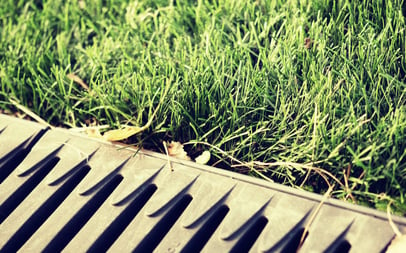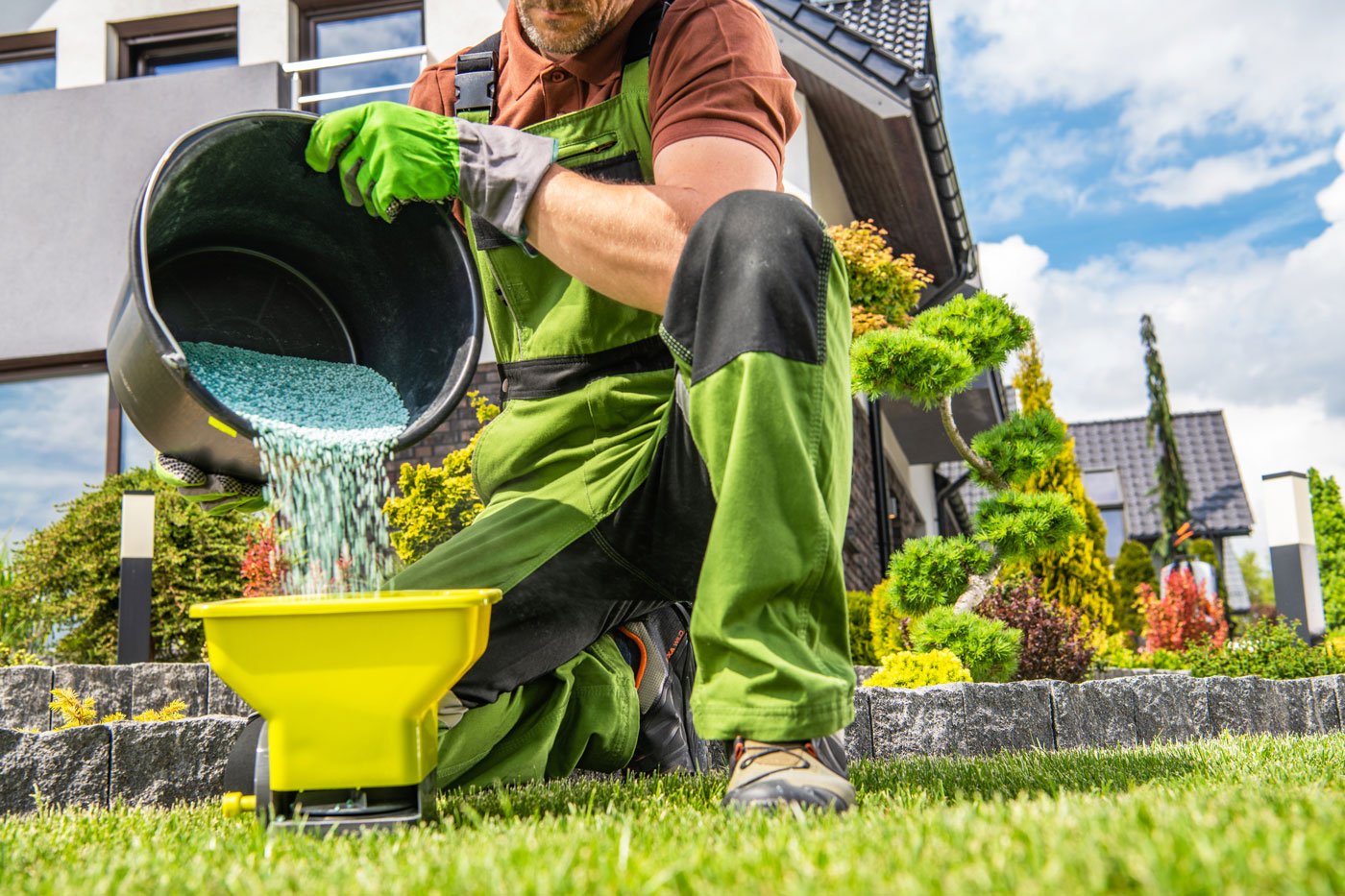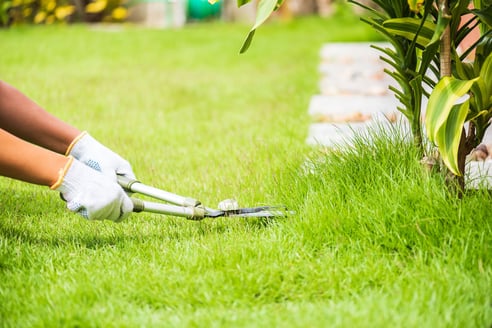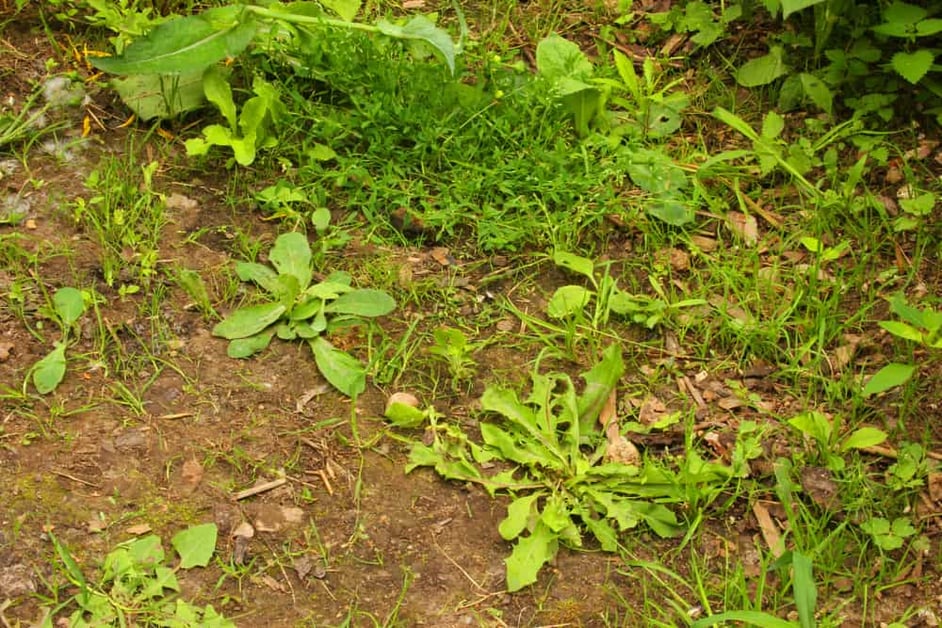Getting the best out of your lawn can be difficult, especially as it can change so much from one season to another. You might be using it as a picnic area or an ornamental green in front of your property. Regardless of what its purpose is, it needs regular maintenance to look its best. Here we have the best tips and tricks to care for your lawn and maintain its lush green color.
Soil
As with all landscaping, you need to know your soil. Experts can analyze it and make sure it’s at the right pH level for grass to thrive. Lime can help restore a soil’s natural pH to help your grasses grow, however in some locations that aren’t ideal for grass to grow, the soil will have to be manipulated further. You can find more detailed information about soil care on our "Introduction to Landscape Maintenance" page.
Weeds, Moss and Thatch
Weeds, moss and thatch can ruin a perfectly good lawn and so should be treated before they begin to prevent too much grass growth by preventing water from penetrating the soil and blocking air and nutrient uptake. Leaves on the ground in fall can work in much the same way so should be raked up regularly.
If there is a small number of weeds, they can be pulled by hand but if there’s a large amount, they should be sprayed with herbicide. Moss and thatch should be raked out of the lawn, a process known as scarification, in spring and drainage should be looked into closely as moss thrives in damp conditions.
 Drainage
Drainage
If moss is present, then the lawn’s drainage should be improved so that heavy rainfall doesn’t wipe out your grass altogether.
Slopes should be flattened where possible to avoid pools of water and clay should be removed from the soil as this prevents good water dispersion too.
Aeration
Air needs to reach the roots as much as water, so it’s a good idea to aerate your soil by poking long thin holes into it, either with a garden fork or special tools and machines - you can even use special aeration shoes as you walk over your lawn!
Overseeding
After scarifying and aerating your lawn, the next step is to overseed. This is best done once a year, after winter in order to improve any areas of the lawn that are particularly dry or have been damaged by frost and before spring growth starts. It can be particularly helpful in areas shaded by trees as the grass here can die out quickly and easily. Overseeding will allow grass to fill the bare patches of grass and prevent weeds from filling them. If the weather is dry, you should water with a sprinkler for two or three days after seeding and you should see the grass begin to sprout around a week to ten days after.
On a small scale, it’s worth noting that birds will try to eat the seed you’ve sown so you can cover the area with netting. What’s more, after seeding, you should top-dress your soil.
Fertilization
Fertilization should take place twice per year; one application of a nitrogen-rich feed after overseeding as spring gets underway, and one application of phosphate heavy fertilizer in fall. Although more can be added in summer if the grass begins to look drab, however after August, nitrogen-rich fertilizer should be avoided as it encourages growth which can be damaged by falling temperatures and winter frosts.

Fertilizer is best applied on moist soil or before rain to make the most of the weather and avoid the overuse of water, and mixing it with soil ensures even distribution and stops the grass from becoming parched. In addition, chicken manure pellets can be used as an organic alternative to man-made nitrogen-rich fertilizer. For fertilization and other sustainable maintenance activities, you can review our "How to Do Sustainable Maintenance" blog post.
Mowing
The frequency of mowing will depend on the necessity of the quality of grass for your property. It’s not technically necessary to mow during summer months as grass goes dormant, and will revive in fall. However, it can still be advisable to mow from time to time to remove the seed heads that pop up, and if lush thick grass is required all year round, then year-long mowing is needed too, as it deters weeds and keeps the lawn looking healthy.

If left in summer, your grass should be at least 8cm long in order to shade the soil to prevent weed growth, otherwise increase the height of the mower’s blades gradually for the first half of the year and decrease in the second half.
If you have winter frosts the grass should not be mowed, or even stepped on to avoid fracturing the ends of the grass, but make sure it’s not too short going into winter as this will make it more at risk of damage from the cold. You should never mow the lawn when the ground is wet as this will cause a great deal of damage to the lawn itself.
Furthermore, to maintain a neat lawn, the edges should be maintained at the same rate with edging shears or electric, ideally solar-charged, trimmers.
Irrigation
Like mowing, the frequency and depth of irrigation largely depends on the microclimate of your lawn as well as the requirements of your property. Lawns will naturally go dormant over summer and turn brown but will recover when the rain comes back in fall so it’s not usually necessary to water. However, if you do need to maintain a green sward, then lawns should be deep watered in the morning to avoid the heat, every seven to ten days. This ensures minimal moisture on the lawn overnight as well as keeping the lawn anchored in the soil due to the roots reaching far down to obtain the water.
You can also help the soil intake the water by aerating before watering with a garden fork or, for large lawns, specialized machinery.
How Much Does Lawn Care Cost?
Usually you’ll be charged per square meter, however if your lawn space is smaller it might come as part of a whole landscaping package, or you may make regular installments for longer treatments of your lawns. Make sure you ask your landscaping company from the outset to be aware of installation and maintenance costs. Before choosing a landscape maintenance company, read our blog post “How to Choose the Right Corporate Landscape Company? .
Conclusion
Karaoglu Landscapes have what it takes to maintain your lawn. We have the expertise and equipment to install and care for your lawn, no matter the size or purpose. To see our previous work, check out our gallery pages, or to get a quote for your landscape, click here.
![karaoglu-web-footer[7].webp](https://blog.karaoglu.com.tr/hubfs/karaoglu-web-footer%5B7%5D.webp.png)

